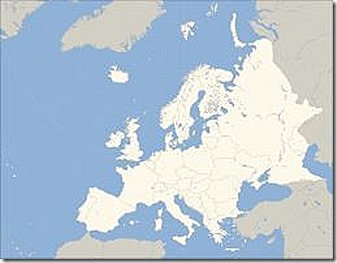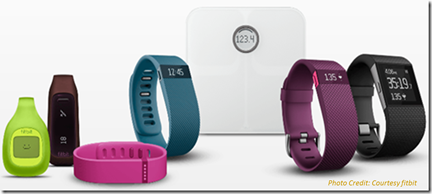In this interview Christian von Hammel-Bonten shares insights on how he sees mobile payments develop across Europe, from his key position as EVP at Wirecard AG, a technology and financial services payments company that is a leader in both acquiring and issuing business across the region and world-wide.
Christian thanks very much for your time today. Could you please give us some context of Wirecard and what you do?
Simply said, Wirecard is a global technology group that supports companies in accepting and issuing means of electronic payments. We offer services in all roles of the payment value chain: issuing, issuing processing, payment service provider, acquiring and acquiring processing. Group operating activities in our core business are structured into key target industries: Consumer Goods, Digital Products, Travel & Mobility and Telecommunications. The idea of these verticals is to understand needs of our clients and deliver focussed solutions. In my current role, I am in charge of the Telecommunications sector that includes all products & services related to mobile payments.
Europe has historically had the longest history with pursuit of mobile payments. From your experience over the years how has 2014-2015 differed?
In past years, NFC was always a topic that was discussed but had not seen solutions being commercially rolled out. This changed in 2014-2015. We’ve seen launches in mobile payments, with Wirecard involved as well. Bank activities have increased with cloud based payments involving Visa and MasterCard. On top of this, the launch of Apple Pay in the US and now announced for UK, has increased awareness and interest on the merchant and consumer side.
Would you say that mobile payments is converging or diverging?
I believe we are at the early stage of Mobile Payment and as I look at the early activities in Fintech we’re at the beginning of a disruptive era. When we started Wirecard 16 years ago e-commerce was below 1% of retail sales, no one would have predicted the size of retail sales online today. Looking back I compare it with the trend relating to digital cards.
The activities and discussions focussed too much on the term mobile payment. It is digital payment that may be delivered through the mobile but other device types such as wearables may be equally promising. One thing that is clear is that the physical element, namely the plastic card, increasingly disappears – it will be transformed into another form factor, digitized credit credentials.
But how would we extract cash in that case?
In a number of European countries we observe initiatives that are resulting in cash fading out. Take Sweden, Denmark and UK for instance. In my opinion, cash will not ever disappear in the near future but the majority of payments you receive will increasingly be digital payments going forward.
What are some peculiarities you observe in Europe versus your other activities in other regions such as APAC, UAE and South Africa?
Developments in E-commerce across all these regions differ, and even within Europe, countries are at different levels of maturity. E-commerce in Europe as a whole is highly developed, as we enjoy high levels of mobile coverage of good quality. Infrastructure is essential, of course, for the success of digital payments. Communications infrastructure becomes the highway for retail stores and effective communication networks are a pre-requisite.
Another factor is payment culture in various countries. The use cases and consumer needs differ. If you look at Africa it’s not NFC mobile payments that is needed, rather it is mobile money because of the lack of banking infrastructure. Across APAC again it differs widely. In Singapore there is a high penetration of cards and terminals, but in nearby Philippines this may be completely different. Similarly you can compare Germany and UK on these parameters. In Germany ELV solves merchant problems and consumers still prefer cash.
Success in payments comes from understanding the needs of players in all parts of the ecosystem. Paying with a mobile device may not be needed as a tool for financial inclusion where we have well-developed banking infrastructure, but in Western countries and world-wide, crowd funding, P2P lending and other services are rising up to meet unique consumer and business needs.
M-Pesa recently launched in Romania possibly as they identified a larger proportion of under banked, largely based on cash. This may be a viable solution in the Romanian market but not suitable for UK or Germany. Although there is a short distance geographically between European countries, there can be big difference in payments.
Could you share some insights from your work on mobile wallets such as with the BASE Wallet, Deutsche Telekom MyWallet, Orange Cash and Vodafone SmartPass?
We see huge differences in European markets that cause different states of readiness. In UK we have markets ready for digital payments, but Germany is somewhat behind in this respect as payment culture is different.
A good way to understand this is to study the number of terminals and the number of cards in each European market, and trace the growth of contactless in POS. Apart from UK, Switzerland is also heavily contactless. In Spain too consumers have embraced contactless payments. In other countries we have to be patient until the necessary relevance is established on the consumer side.
So we have to be somewhat patient but no one contradicts that in a few years the majority of payments will be made digitally – with a smartphone, wearable or other digital form factor.
Is it digital natives who are installing these apps or others interested as well?
It is really both. The ones who adopt are generally people who have an affinity to the service, but also towards technology. If you use your mobile phone today only to make phone calls you’re not perhaps someone who would adopt mobile banking and mobile payments.
Generation Y use smartphones heavily and rely on mobile banking for managing family finances. We also see that males are more predominantly early adopters of the new services.
Would you say there is a growing importance of the mobile number in all of this?
Yes, Certainly. Like the email address is already more important today for your communication than your postal address is, the mobile number is already a personal identifier for many activities.
The mobile number has the potential to act as a proxy for many underlying financial services. Take for example P2P transfers. It is challenging to remember bank details, more so with IBAN, so the mobile number becomes a link to your bank details in successful solutions such as Pingit, Paym or MobilePay. Also, you don’t have to remember phone numbers as the phone book does this.
Do you see SEPA as an instrument for achieving more consistency in payments across Europe?
At first people took some time to be convinced but today SEPA Credit Transfer and SEPA Direct Debit simplifies things for people making payments across Europe. It is a future enabler for a number of bank services and if banks want to stay competitive they need this form of interoperability.
The only thing missing is instant payments, and I hope this will come, European-wide. However banks are finding it difficult to set something like this up on their own. Really it should already have been made available across Europe, as UK already has Faster Payments. There are a number of banking innovations in the UK such as Pingit, Paym and Zapp (expected) and these are greatly facilitated by real time instant payments.
A good financial and payment infrastructure is crucial for supporting businesses and consumers. It is as important as a good road infrastructure and it is the prerequisite for innovative digital services.
Yes, I see how this could help to address some of the disruption to banks from FinTech, but also enable innovative new services from new entrants that compete with the banks. Speaking of this, Wirecard launched the Wirecard Smart Band based on HCE – could you please share a bit about your experience with HCE?
HCE or Cloud based payments has greatly increased the possibilities for banks, telecommunication companies and others to offer mobile payment services. In the past, almost all such projects depended on hardware-based elements such as the SIM and embedded secure elements (eSE). However, something that is hardware based has an owner who seeks control and finding collaborative models between all stakeholders delayed or prevented the launches of mobile payment solutions.
With HCE/Cloud-based payments however, such collaboration is less essential, which is its best advantage. Financial Services groups across Europe are looking closely at this technology. No solution I’ve seen is as convenient in being able to enrol users and deliver digital cards to them. Why should we buy gift cards in supermarkets, when we can just send them digitally and use gifted money through apps?
I believe the distribution of cards is about to change, and plastic cards will increasingly disappear as we have digital cards, and not just one each!
What does Wirecard do to help companies, say a UK-based retailer wanting to move on this opportunity?
Wirecard offers two different approaches. Firstly we help our partners to build up new card portfolios by issuing cards, irrelevant of the form factor as an issuing bank with licences for the SEPA region.
Secondly, we enable our partners to digitise their existing cards and it does not matter which NFC approach – SIM, eSE or HCE – clients prefer, we are technology-agnostic and support them all. So with respect to retailers, we enable them to issue digitized cards to their customers as part of their loyalty solution. This allows retailers to offer their customers a convenient and fast option for paying, in order to simplify overall checkout and at the same time leverage additional opportunities to engage with customers.
Do you also provide an app if clients don’t have one?
Yes, we have built a flexible, agile platform to cater to different environments. We offer to integrate through Software Development Kits (SDKs) with existing apps or we can provide a customized app.
All apps of our live solutions including Orange Cash and Vodafone SmartPass have been customized to meet the client’s branding and functional requirements.
What is the best path to interoperable mobile payments across the EU, for instance for a UK customer using a smartphone to pay in Spain, and what’s the outlook for 2015 and beyond?
Right now existing solutions are based on Visa and MasterCard specifications and may be used not just across Europe but also world-wide.
Your example is an interesting one, as travel is one of the biggest drivers for prepaid in the UK market. If you are going to Spain, instead of buying a card you can just go online, register and get your digital / virtual card, top-up and start to spend.
This is a good example of how we see the future of cards. Digitization started and progresses in many areas of our life and payment cards will be clearly affected as well. Short term we will see the first big success of a mobile payment solution with the launch of Apple Pay in UK in 2015. This will spur all activities around mobile payments in Europe and bring us closer to a world of digital cards and a cash-less society.
Thanks very much Christian, it has been very useful to gain your insights on mobile payments in Europe and I take this opportunity to wish you the very best for the future.
 Christian von Hammel-Bonten is Executive Vice President Telecommunications at Wirecard AG. Christian has almost a decade of experience in the online payment industry. From 2002 until 2009 he was responsible for Project Management at Wirecard. Before returning to Wirecard in October 2011 Christian worked as Senior VP of Product Management for Clickandbuy, a company of Deutsche Telekom. In his current role Christian is responsible for the Telecommunications sector at Wirecard.
Christian von Hammel-Bonten is Executive Vice President Telecommunications at Wirecard AG. Christian has almost a decade of experience in the online payment industry. From 2002 until 2009 he was responsible for Project Management at Wirecard. Before returning to Wirecard in October 2011 Christian worked as Senior VP of Product Management for Clickandbuy, a company of Deutsche Telekom. In his current role Christian is responsible for the Telecommunications sector at Wirecard.
Charmaine Oak
Author of The Digital Money Game, co-author Virtual Currencies – From Secrecy to Safety




![clip_image002[4] clip_image002[4]](http://digitalmoney.shiftthought.com/files/2014/09/clip_image0024.jpg)
![clip_image004[4] clip_image004[4]](http://digitalmoney.shiftthought.com/files/2014/09/clip_image0044.png)